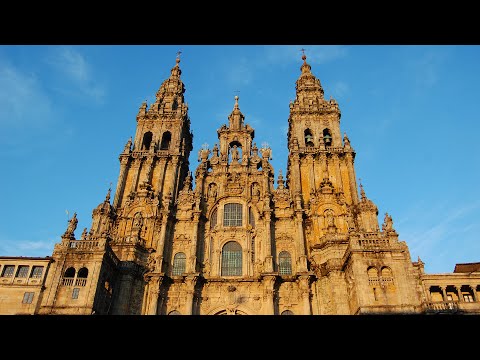
Northern Spain, a region characterized by verdant landscapes, rugged coastlines, rich historical heritage, and vibrant cultures, is also the cradle of one of the most famous pilgrimage routes in the world—the Camino de Santiago. Also known as the Way of St. James, this extensive network of paths converges in Santiago de Compostela in Galicia, where tradition holds that the remains of Saint James the Apostle are buried.
#### Historical and Cultural Significance
The history of the Camino de Santiago stretches back to the early Middle Ages when it became established as a major Christian pilgrimage route. Over centuries, millions have traversed these routes from various starting points across Europe to reach the cathedral of Santiago de Compostela. The pilgrimage gained such prominence that it was declared the first European Cultural Route by the Council of Europe in 1987 and later inscribed as a UNESCO World Heritage Site.
Each path offers a unique slice of Spanish culture and history. From language variations—including Basque, Castilian Spanish, and Galician—to architectural wonders spanning Romanesque churches to Gothic cathedrals and modernist buildings, travelers on these routes witness a time-capsule view into Spain’s soul.
#### Exploring Different Routes
The diversity among the Camino’s routes caters to pilgrims with different desires and capabilities:
1. **Camino Francés** – The most popular route begins at Saint-Jean-Pied-de-Port in France and crosses into Spain at Roncesvalles/Orreaga. It stretches across 780 kilometers filled with iconic towns like Pamplona, León, and Burgos until reaching Santiago.
2. **Camino del Norte** – A challenging but picturesque route along Spain’s northern coast. It meanders through Basque Country, Cantabria, Asturias, and into Galicia showcasing breathtaking ocean vistas.
3. **Camino Primitivo** – Known as the “Original Way”, this is reputedly the first pilgrimage route to Santiago taken by King Alfonso II from Oviedo in the 9th century.
4. **Camino Inglés** – Historically used by English pilgrims who arrived by sea at ports such as Ferrol or Coruña.
5. **Via de la Plata** – Running from Seville northward through western Extremadura and Castile-Leon; this less-traveled path offers solitude amidst serene landscapes.
#### The Natural Splendor
Northern Spain’s varied geography makes walking any part of these Caminos an encounter with nature’s magnificence—from lush green valleys of Navarre to imposing mountains like those found at Picos de Europa or O Cebreiro pass. Along coastal paths like those on Camino del Norte or even inland tracks filled with vineyards (especially around La Rioja on Camino Francés), natural beauty provides pilgrims not only visual enjoyment but also moments for introspection.
#### Spiritual Experience
Beyond physical exertion or cultural exploration lies a deeper reason many embark on this journey: spiritual growth or seeking solace following life changes like retirement or losing loved ones. The Camino offers an opportunity for self-reflection away from everyday distractions; many describe arriving at Santiago de Compostela as a transformative experience—whether they subscribe to religious beliefs or not.
#### Sustainable Tourism
As popularity grows amid modern-day seekers—spiritual tourists included—concerns arise about maintaining sustainability along these routes which are already seeing wear from overuse in some spots. Local authorities along with national park services work towards educating visitors about responsible travel practices including litter management and respect for both nature and local customs.
### Conclusion
Whether one starts their journey inspired by faith, culture fascination or simply adventuring spirit—the Camano de Santiago promises all who trod its paths an unforgettable expedition through some of Northern Spain’s most captivating sceneries interwoven with deep historical roots that continue shaping European identity today.
